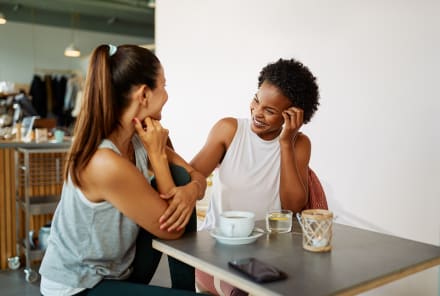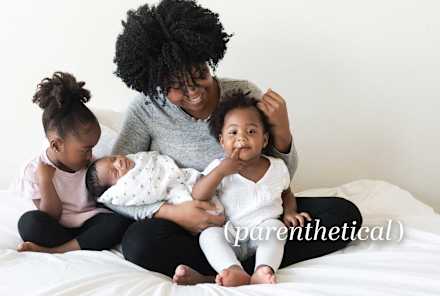Advertisement
How often do you think about the method you use to communicate? How often do you consciously decide to text someone rather than send an email? Or ask for a face-to-face conversation rather than dashing off an email? Or wind up in a sticky situation with someone who mis-read your tone on text?
We usually communicate in whatever way's most convenient, but this is often a formula for misunderstandings, even with the best of intentions. Thankfully, you can start your communication off right, and when you do, you’ll save yourself and improve your relationships.
One quick rule of thumb: Match the communication method to the level of importance of your conversation — and you’ll pick the perfect method every time.
So let’s identify the levels of communication. Most of us communicate through texting, emailing and chatting. This is the first level of communication. The amount of information you send through these mediums is mostly words, plus a few emoticons.
The second level of communication occurs over the phone. Here, you provide words as well as tone. So you increase the amount of information being conveyed.
Of course, the most information that you give or receive is when you're talking with someone, in-person, because you get body language, tone and words.
Here's a breakdown:
- Level 1: Words only (text, e-mail, chat, or tweet) = low importance
- Level 2: Words + tone (phone, voicemail) = medium importance
- Level 3: Words + tone + body language (in-person, FaceTime, Skype) = high importance
Low-importance conversations
These are Level 1 conversations, and as such, using only words is fine. Here are some examples:
- Texting to let someone know you'll show up in five minutes.
- Emailing an address.
- Asking someone to pick up a gallon of milk on the way home.
Medium-importance conversations
For these, you want use words and tone. Some examples:
- A last-minute change in plans
- When you're delayed in traffic and want to explain that you'll be late
These instances warrant a phone call to let the other person know what’s happened. You don’t want to depend on their checking texts or email. Pick up the phone and call.
High stakes conversations
When the conversation is serious, emotional or could disappoint someone, you need as much information as possible: body language, tone and words.
As a physician, I choose Level 3 communication when I need to deliver bad news. For someone who wants to break off a dating relationship, they'd ideally choose to have that conversation in-person (i.e. Level 3).
If you chose the wrong method, don't panic. Just take it up a level.
As soon as you realize there's a conflict or miscommunication, take it up a level. Let's say you send a quick text and receive a surprising response. Now the level of importance just went up, so pick up the phone and talk to the other person.
If you're talking on the phone and the conversation isn’t going quite right, make an appointment in person or on Skype or FaceTime, so you can both gather more information and understand each other better.
The more aware you are of the method you use to communicate and why, you can start choosing the most effective and efficient mode for each situation.
While a quick text can seem efficient, it may create additional work to clear up misunderstandings. At the same time, a sit-down conversation probably isn’t necessary for making dinner plans — unless you’re asking someone on a first date. (Keep it classy and do it in person ... or at least over the phone!)
Watch Next
Enjoy some of our favorite clips from classes
Enjoy some of our favorite clips from classes
What Is Meditation?
Mindfulness/Spirituality | Light Watkins
Box Breathing
Mindfulness/Spirituality | Gwen Dittmar
What Breathwork Can Address
Mindfulness/Spirituality | Gwen Dittmar
The 8 Limbs of Yoga - What is Asana?
Yoga | Caley Alyssa
Two Standing Postures to Open Up Tight Hips
Yoga | Caley Alyssa
How Plants Can Optimize Athletic Performance
Nutrition | Rich Roll
What to Eat Before a Workout
Nutrition | Rich Roll
How Ayurveda Helps Us Navigate Modern Life
Nutrition | Sahara Rose
Messages About Love & Relationships
Love & Relationships | Esther Perel
Love Languages
Love & Relationships | Esther Perel












